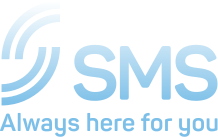Allan Leinwand, on Gigaom, asks an interesting question. ‘Is it too easy for your cloud provider to snoop on your business?’. His argument runs as follows
To help understand the implications here, let’s examine what your public cloud provider could know about your business. Assuming that your business is using infrastructure-as-a-service (IaaS), the cloud knows: where, when and how often your users connect; the types of devices and browsers your users have; how much data your business has stored; the number of compute servers that your business uses; the geography where these servers are deployed; and your active business relationships (seen by watching traffic flows). If you’re using platform-as-a-service (PaaS), your cloud provider could know: the number of payments that you process (and peak payment hours); your database transaction rates and query patterns; the types of data that your business sends and receives; the velocity of your software changes; when you are upgrading or releasing new products (seen by watching traffic to specific locations on your site); and more. For most businesses, all of the above data is considered intellectual property and carefully restricted for competitive and, in the case of a public company, regulatory, reasons.
Much of his argument is theoretical and public cloud providers, such as DropBox or Amazon, are unlikely to start snooping openly on their customers data. However it does highlight how public clouds leave business documents and email open to snooping. If not by the cloud provider then possibly by someone hacking into their systems
Confidential clouds
The solution for businesses is to run their own hosted cloud. Private clouds are inherently more secure and hosted SharePoint delivers private cloud storage, with the ability to control access to individual files and folders on a user-by-user basis.
Thanks to Office integration and web browser access, employees can access files wherever they are. Whether it is working from home, showing brochures on their tablet device or updating sales quotes whilst talking to customers.

